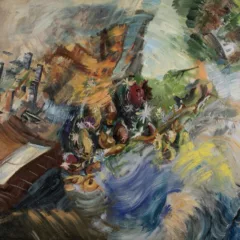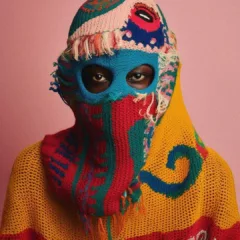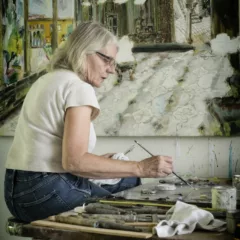The experience of visiting documenta is what I imagine running a marathon to be – and I’m always unsure whether I will complete the course. I allowed four days this time – longer than any of my previous trips. That meant I felt free to watch videos in their entirety and see a number of films in what was a more-or-less parallel festival devoted to documentary and reportage — and all of them were first rate. It included a retrospective of the Chinese documentarian, Wang Bing. “Bitter Money” (2016) — at 152 minutes, one of his shorter, multi-hour films — follows workers from rural areas who moved to the city for factory work in the rag trade, where they live and work in abject — if not obviously unsafe circumstances. The story was clear after the first half hour – but the extended time enacted something of the endless grind of the lives portrayed. Wang is unobtrusive and thoroughly respectful of his subjects – with whom he has obviously developed a significant trust — and depicts them as individuals, rather than exemplars of social circumstances.
A second retrospective was devoted to the Brazilian/Israeli filmmaker David Perlov (1930-2003), who was a major influence on filmmakers of the following generation. It included his most important project, the six-part “Diary,” which was made over a decade. An extraordinary film by Douglas Gordon features the Lithuanian-American filmmaker, poet and film curator, Jonas Mekas. The title, “I had Nowhere to Go,” comes from Mekas’ memoirs, from which he reads. He says it’s a story which listeners are welcome to consider as fiction, where “the villain is the Twentieth Century.” Gordon is parsimonious with imagery and much of time the screen is blank; this makes what imagery there is – never a literal depiction of the text – all the more powerful.
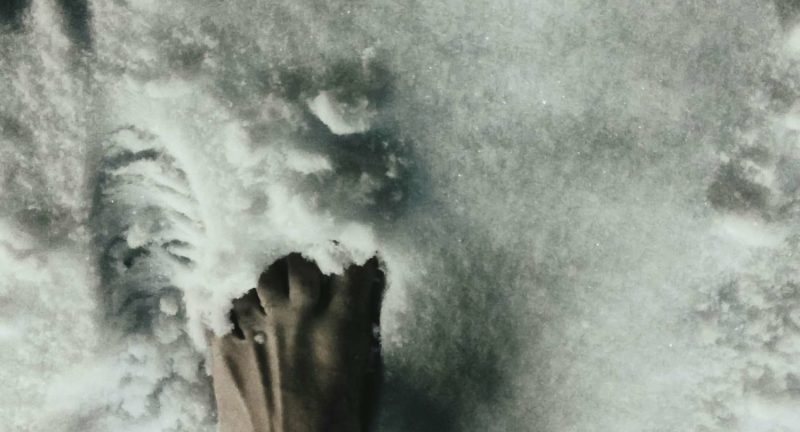
I attend documenta for what I can learn, not to evaluate the curators or their theses and will largely comment on a number of works which caught my attention. Still, some of the presentation demands comment. Ongoing wars, massive migration of political exiles, exploitation of the weak by the powerful and destruction of the environment for short-term profits fill our news, so it is no surprise that the subjects attract artists. But the curators (Neue Hauptpost) made poor choices in grouping so much of this work with a similar emotional tenor; this diminished the impact of individual statements. The first piece I paid attention to made the most impact – a situation that likely held true for many visitors, regardless of where they started.
The other notable curatorial fault was the selection of too many artworks that concern or take the format of archives, and in the case of the Grimm Museum, siting many of them together. Regardless of what I thought of any of the particular works, archives demand time and are meant to be seen sitting down. No one is going to properly study text after text standing and juggling for space with others. I don’t think such projects are well-suited to huge exhibitions with hundreds of works on view.
At the Neue Neue Galerie Arin Rungjand’s “246247596248914102516… And then there were none” (2017) caught my attention. It consisted of a wonderful, double-channel video and objects in an installation which added little to it. The narrative was largely from the diary of the artist’s grandfather who was Thai Ambassador to Germany during WWII and lived through the bombing of Berlin. It was a personal and moving story of a man caught in someone else’s war – and did not attempt to tie it into a neat message. The video included views of the Democracy Monument (1934) in Bangkok, a cast of part of which was the most impressive piece of the installation. The monument has had a fraught history, with multiple political associations over time. This, and the fact that the artist’s father was attacked by neo-Nazi’s, gave this piece particular resonance with current U.S. News.
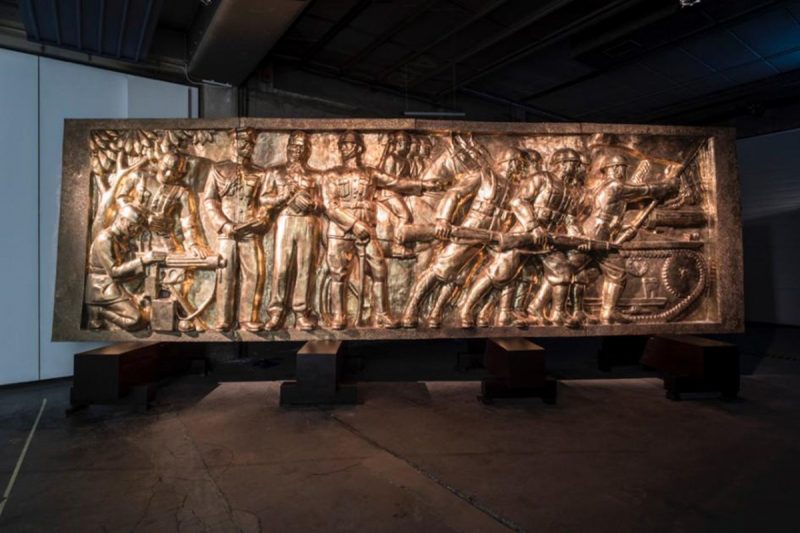
Much of the work at the Neue Galerie circled around several subjects: that artworks and other cultural works, such as books, are products with market values, the way in which art circulates in periods of war and under colonial regimes, the involvement of museums, libraries and universities in this circulation of cultural production, and the spread of artistic ideas across cultures. Works in the first three rooms also made the point that oppositional art knows no particular style and is as often abstract as figurative. An interesting example was a wonderful group of abstract paintings and small, welded sculptures done in the 1950s by Antonio Vidal, a member of the Cuban group known as “Los Once,” whose work is little seen. They were hung in the same room as Cecilia Vicuña’s series, mostly from 1972-73, done in the style of South American, devotional paintings but portraying her heroes, such as Karl Marx, Fidel Castro and Salvador Allende as well as holy figures she wished for, such as the angel of menstruation.
Despite the curators’ thematic interests, much of the work that impressed me the most at all the venues had little obviously to do with the larger issues. They were sometimes by artists I didn’t know, and a surprising number were created by artists in their 80s or 90s – a relief from the overemphasis on youth and the next, best thing. Among the paintings that caught my eye were the Futurist-inspired paintings of 1918-19 by Polish artist, Andrej Wroblewski, the Austrian Elizabeth Wild’s small, abstract and colorful collages done over the past two years by the 95-year-old, the Ukranian Erna Rosenstein, who at age 80 painted a kitchen knife floating in front of a nocturnal landscape. I was also grateful for the chance to see work by a group of Indian painters, about whom I have recently been reading but have had limited opportunity to see. They included the 1934 “Self-portrait as a Tahitian” by the Indian/Hungarian Amrita Sher-Gil; inverting Gauguin, she presented herself standing in front of a Chinese painting, nude to below her belly-button. There were a series of ceramic reliefs and even more impressive paintings by K.G. Subramanyan (in his 80s), whose bright colors were a striking contrast to the violence of their imagery. I hadn’t even known of Ganesh Haloi, whose lyrical and abstracted landscapes were hung in the Hessisches Landesmuseum.
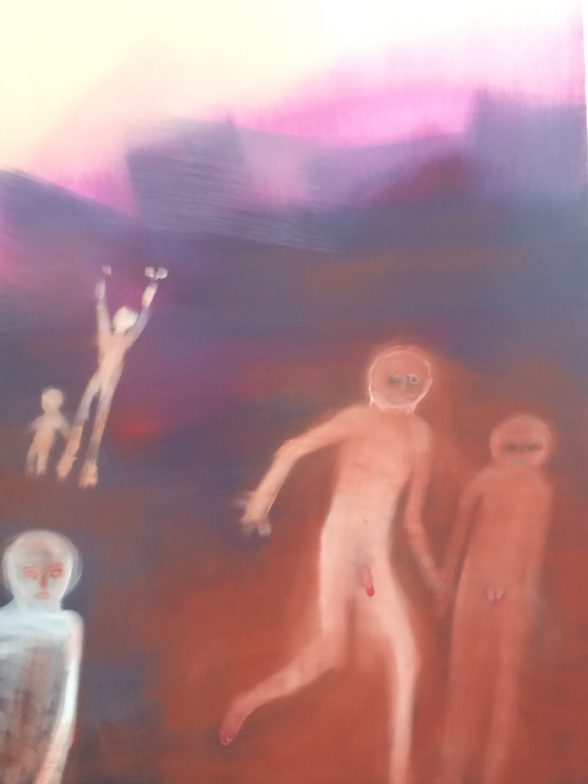
At this point I only have room to mention some of the further work I’m grateful to have seen: the haunting and emotional installation of paintings by Miriam Cahn titled “KOENNTEICHSEIN” (2014-17), the Cambodian Khvay Samnang’s unforgettable video,“Preah Kunlong” (2017) which documents the highly physical connection with animal spirits that the Indigenous Chong people use as a way of marking territory, “Fluchtzeileuropahavarieschallke”, the name given the large constructions that Mexican composer, Guillermo Galindo creates out of detritus abandoned by refugees crossing the U.S./Mexican border, which he uses as musical instruments, and the gutsy, wooden sculpture of the Kosovan artist Agim ヌavdarbasha.



